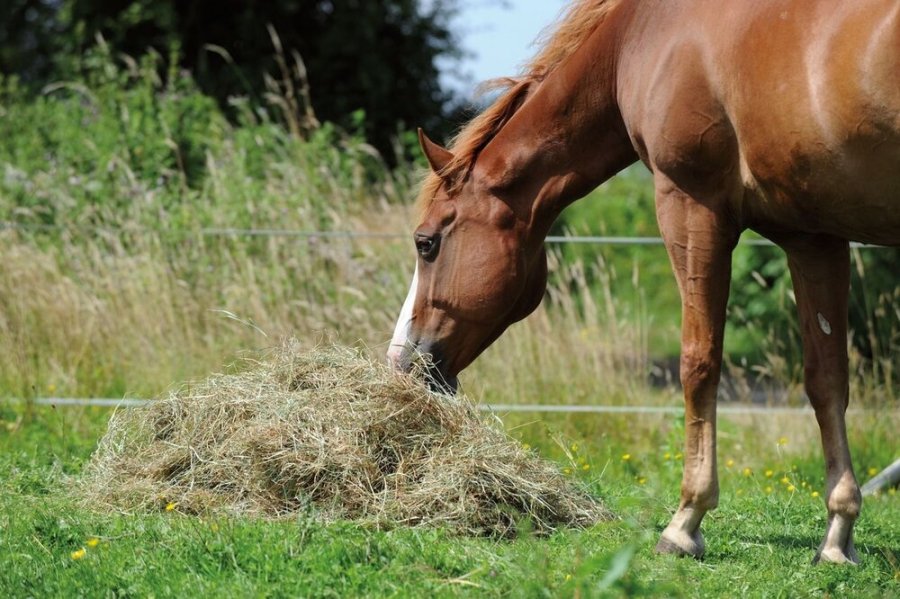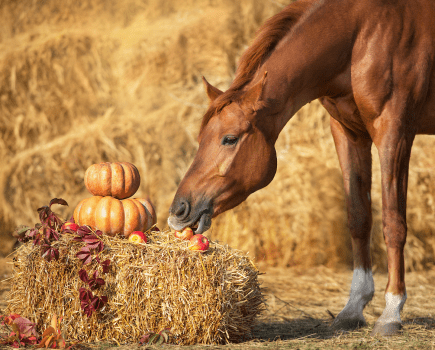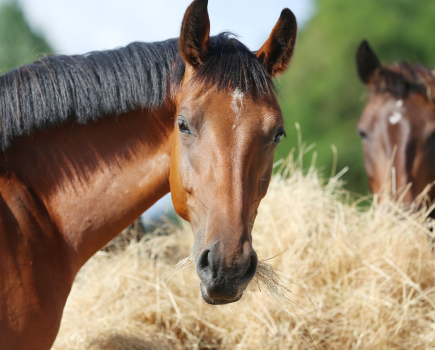Horses have a unique digestive system which is most comparable to that of rabbits, says Dr Courtney Miller MRCVS, head of nutrition at Dodson & Horrel.
They are hindgut fermenters, which is a very different setup from that of a cow, human or dog.
In hindgut fermenters, the size of the large intestine, or the latter half of the digestive tract, is increased and holds significantly more volume.
That is in opposition to the forward shift towards a cow’s four-chambered forestomach, deeming them foregut fermenters, or the more even distribution found in a dog, best described as an omnivorous carnivore.
These anatomical shifts allow each species to best digest the food that they eat.
However, modern human influence has altered the traditional diet of each respective animal, even down to the type of pasture that we now have available for our horses across much of the UK, and this can lead to changes indigestive function.
Although these influences should not be viewed negatively, they should be accounted for when creating a nutritional plan to best support health and wellbeing.
As an example, saliva production in horses is stimulated by food intake and chewing. Saliva is an important lubricant and buffer in the stomach, helping to maintain an ideal environment for digestion to carry on into the small intestine.
Generally, fibrous feeds which take longer to break down during chewing will encourage greater saliva production, and so ensuring that your horse is provided with the recommended 1.5 to 2%of his bodyweight in forage dry matter weight each day (the weight of the forage without its water content) will help to support maintenance of gastric function.
Food’s journey
Chewing can also be considered the first phase of digestion, as it gently releases nutrients that can start to be digested before food boluses reach the hindgut.
After swallowing, the food bolus passes through the oesophagus and into the stomach, which holds around 10 litres of fluid and, again, is unique in the horse.
The margo plicatus separates the stomach of the horse into two sections —a squamous or non-glandular region at the top and a glandular region at the bottom.
As food travels from the stomach to the small intestine, a complex communication system of stimulatory and inhibitory signals is triggered to digest much of the protein, fat and non-structural carbohydrates in the diet.
Some proportion of these come from concentrate meals, which do well to support the energy needs of horses with more demanding workloads, but won’t completely meet the energy requirements of horses without the addition of roughage like hay or haylage.
Minerals such as calcium and phosphorusare also absorbed in the small intestine. Once food moves past the small intestine it enters the hindgut, with the caecum and colon taking up a significant amount of space in the abdomen.
Hindgut fermentation is localised to this area of the intestine and is responsible for the release of a large proportion of energy in the form of volatile fatty acids (VFAs) that the horse can then use for energy.
This form of energy production is particularly important for horses on forage-only diets.
The hindgut is a strictly anaerobic (oxygen-free) environment, and utilises microbes to help breakdown the fibrous plant material in the diet.
Keeping the pH of this environment stable helps maintain its functionality and, therefore, the continuation of normal digestion.
Healthy habits
The gastrointestinal tract of the horse is a complex system that works best when it is kept in balance.
In order to support this balance and overall gut health, you should:
- Ensure that forage makes up themajority of your horse’s total daily diet and equates to at least 1.5 to 2% of hisbodyweight per day
- Provide free access to fresh, clean water at all times so he can remain hydrated
- Choose complementary products that suit your horse’s individual needs with regards to health and workload
- Allow free access to forage, or if this is not possible, provide small portions throughout the day and definitely before concentrate meals are fed
- Follow the manufacturer’s recommended feeding guidelines to ensure that vitamins and minerals are provided at recommended daily amounts to contribute to total daily requirements
- Keep meal sizes small. It’s better to break up total daily hard feed into at least two or three meals, and generally in a 500kg horse to limit most meals to no more than two standard Stubbs’ scoops. This is a rough guide; always weigh out feed and discuss recommended meal sizes by calling the manufacturer’s helpline









